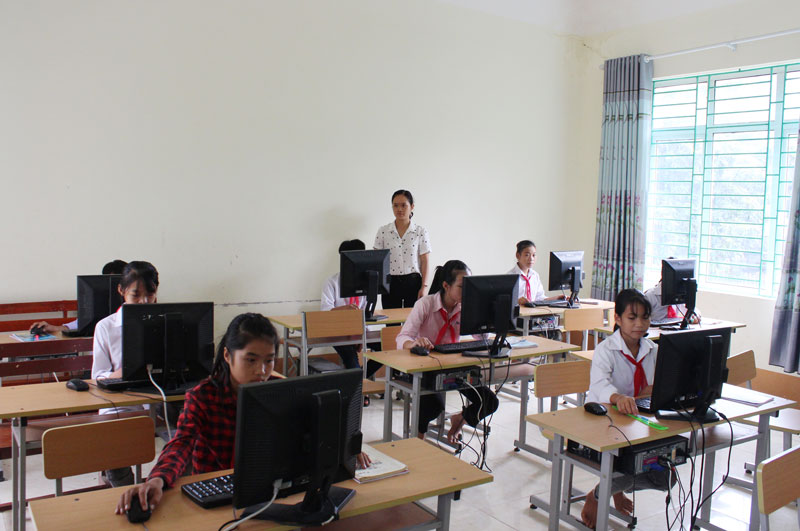
(HBO) – Education in Hang Kia, an especially disadvantaged commune in Mai Chau district, has increasingly improved.
Photo: Infrastructure at My Hoa
secondary school, Kim Boi district
If Mai Chau district sees improvement in education in Hang Kia, Lac Son
district records progress in Ngoc Son mountainous commune. Ky Son district has
paid attention to building a school up to national standards in specially
difficult Doc Lap commune while Yen Thuy district has invested in new schools
worth hundreds of billions VND in the poor communes of Lac Sy and Lac Luong. In
light of such, education panorama in remote, mountainous and especially
disadvantaged communes in the province has improved.
In particular, in order to increase education scale, network and quality in
poor areas, the provincial education and training sector has stepped up the
planning and development of a network of special schools under the province’s
plan on education development in poor areas for the 2015 – 2020 period.
Concluding the 2017 – 2018 school year, the province recorded 13 ethnic
boarding high schools with over 3,500 students, nine of them (nearly 70
percent) met national standards and 13 ethnic day-boarding high schools with
about 2,400 students. As scheduled in November 2018, the provincial education
and training sector will continue proposing the switch of two schools in especially
disadvantaged communes in Kim Boi and Lac Son districts to day-boarding high
schools to offer better learning environment to students.
Therefore, education quality in remote, mountainous and especially difficult
areas have improved considerably. For example, excellent students in ethnic
boarding schools during 2017-2018 academic year accounted for 13.6 percent, up
0.3 percent from the previous school year while students with good conduct made
up 89.3 percent, up 1.8 percent. During 2018 – 2019, the sector will improve
education quality, upgrade school infrastructure and equipment, maintain the
number of students, offer all possible support to students in especially
disadvantaged areas to study in ethnic boarding high schools after graduating
from boarding secondary schools./.
The Department of Education and Training of Hoa Binh province held a conference on March 18 to review the performance of the "Safe and Happy School" Project and set out tasks for 2025. The project, funded by the Taiwan Fund for Children and Families (TFCF), aims to create a safe, inclusive, and supportive learning environment for students. The event saw the attendance of representatives from the TFCF and 26 beneficiary schools.
With over 70% of their workers being women, trade unions across industrial parks (IPs) in Hoa Binh have been actively safeguarding their legal rights and interests while implementing initiatives to improve their income and well-being.
In recent years, the Hoa Binh provincial General Hospital has continuously innovated itself and improved the quality of medical services to meet the increasing needs of local people. With substantial investments in infrastructure and modern equipment, along with a team of highly qualified doctors and nurses, the hospital has gradually established itself as one of the leading medical units in the Northwestern region and a trusted destination for healthcare for people inside and outside the province.
From mastering the fundamentals of programming to achieving national recognition, the Programming Club of the Le Van Tam Primary School (STAR LVT28) in Hoa Binh city has made remarkable strides in the field of robotics.
The Ho Chi Minh Communist Youth Union Committee and the Vietnam Youth Federation chapter of Hoa Binh province organised a programme on March 12 to launch the "Digital Literacy" movement and an online quiz on the resolutions of the Vietnam Youth Federation congresses at all levels, as well as the Politburo's Resolution No. 57-NQ/TW on breakthroughs in the development of science, technology, innovation, and national digital transformation.
As climate change grows more unpredictable, the development of production forests has become essential - not just for economic growth, but for safeguarding the environment and maintaining ecosystem balance. By boosting local incomes, curbing natural disasters, preventing soil erosion, and protecting water resources, these forests play a crucial role in sustainable development.



